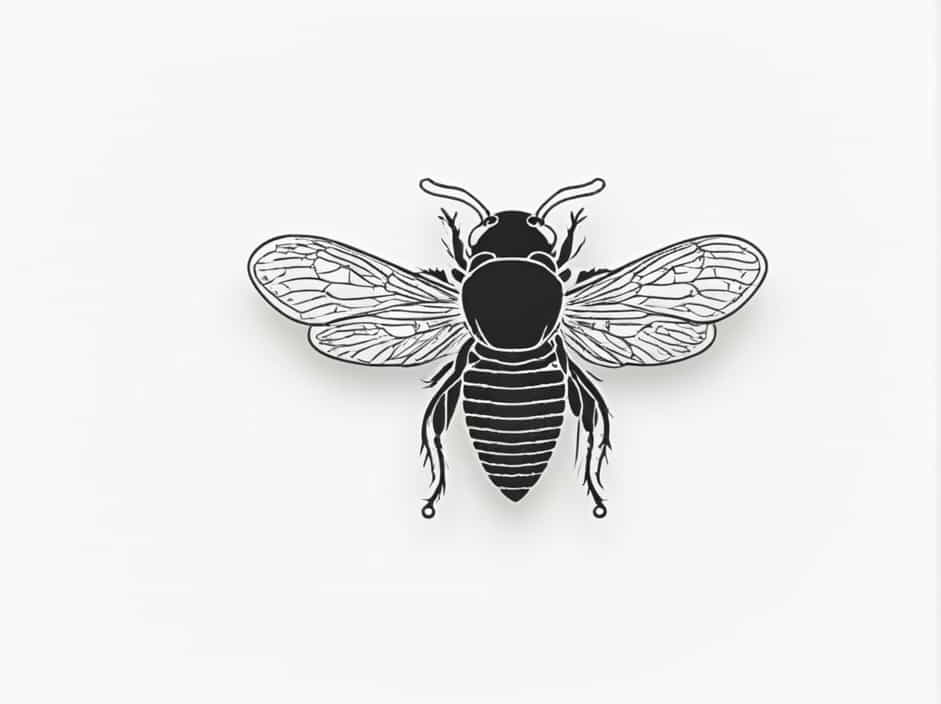Cicadas are fascinating insects known for their loud calls and long life cycles. Unlike most insects, some cicadas can live underground for over a decade before emerging as adults. But what exactly is the lifespan of a cicada, and why do they spend so much time underground? This topic explores the cicada’s life cycle, different species, and survival strategies.
How Long Do Cicadas Live?
The lifespan of a cicada varies by species. On average, cicadas live between 2 and 17 years, depending on whether they are annual or periodical cicadas.
- Annual cicadas – Live 2 to 5 years, but new generations emerge every year.
- Periodical cicadas – Have lifespans of 13 or 17 years and emerge in massive groups.
Even though cicadas can live for more than a decade, most of their life is spent underground as nymphs, with only a few weeks as flying adults.
Cicada Life Cycle: From Egg to Adult
The life of a cicada consists of four main stages:
1. Egg Stage (6-10 Weeks)
Female cicadas lay hundreds of eggs in tree branches or twigs. After about 6 to 10 weeks, the eggs hatch into tiny nymphs, which then drop to the ground.
2. Nymph Stage (2 to 17 Years)
Once the nymphs burrow underground, they feed on tree sap from roots. This stage lasts anywhere from 2 years (for annual cicadas) to 17 years (for periodical cicadas).
3. Emergence and Molting (Few Days to Weeks)
When ready, cicada nymphs emerge from the soil, climb onto trees or other surfaces, and shed their exoskeletons to become winged adults. This molting process is called ecdysis.
4. Adult Stage (2 to 6 Weeks)
As adults, cicadas mate, lay eggs, and die within a few weeks. They do not eat much during this time, surviving mainly on stored energy and small amounts of plant fluids.
Annual vs. Periodical Cicadas: What’s the Difference?
Cicadas are classified into two main types based on their lifespan and emergence patterns.
Annual Cicadas
✅ Emerge every year
✅ Live 2 to 5 years underground
✅ Found in many parts of the world
✅ Less synchronized emergence
Periodical Cicadas
✅ Have life cycles of 13 or 17 years
✅ Emerge in massive groups called broods
✅ Found mainly in North America
✅ Rare but highly noticeable due to their sheer numbers
Periodical cicadas spend most of their lives underground, only surfacing when their entire brood is ready. This synchronized emergence helps them overwhelm predators and increases their chances of survival.
Why Do Cicadas Have Such Long Life Cycles?
Cicadas have evolved long and unusual life cycles as a survival strategy. Scientists believe their extended underground phase helps them avoid predators, harsh weather, and food shortages.
Another theory is that the prime number life cycles (13 and 17 years) make it difficult for predators to develop synchronized hunting patterns, reducing the risk of extinction.
Where Do Cicadas Live?
Cicadas are found in warm regions worldwide, including:
🌍 North America – Home to famous periodical cicadas
🌏 Asia – Many species thrive in Japan, China, and India
🌍 Australia – Hosts a variety of annual cicadas
🌏 Europe & Africa – Some species exist but are less common
They prefer habitats with trees and soft soil, where nymphs can easily burrow and feed on plant roots.
What Do Cicadas Eat?
Cicadas are sap feeders, meaning they consume plant fluids. Their primary food sources include:
🍃 Tree roots (for nymphs underground)
🌿 Tree branches and leaves (for adult cicadas)
Unlike locusts, cicadas do not cause severe damage to plants, although heavy infestations can sometimes weaken young trees.
Why Are Cicadas So Loud?
Male cicadas produce extremely loud buzzing sounds to attract females. Some species, like the Magicicada, can reach noise levels of up to 100 decibels, similar to a chainsaw!
How Do Cicadas Make Their Sound?
Cicadas create sound using tymbals, special drum-like structures on their abdomen. They contract and relax these muscles rapidly, producing their famous buzzing calls.
Each species has a unique song, helping them recognize and find mates.
Predators and Threats to Cicadas
Despite their long life cycles, cicadas have many natural predators, including:
🦉 Birds – Eat both nymphs and adult cicadas
🦇 Bats – Hunt cicadas at night
🦎 Reptiles – Snakes and lizards enjoy cicadas as snacks
🐜 Insects – Spiders, wasps, and ants feed on them
One of the most dangerous enemies of cicadas is the cicada killer wasp. These wasps paralyze cicadas, drag them into underground burrows, and use them as food for their larvae.
Do Cicadas Harm Humans?
Cicadas are harmless to humans. They do not:
❌ Bite or sting
❌ Spread diseases
❌ Damage crops significantly
However, their large numbers and loud sounds can be overwhelming, especially during a periodical cicada emergence.
How Climate Change Affects Cicadas
Rising global temperatures are affecting cicada populations. Scientists have observed some broods emerging earlier than expected, possibly due to warmer soil conditions. Changes in climate may also impact cicada survival rates and distribution.
Interesting Facts About Cicadas
✔ Longest-living insect – Some cicadas hold the record for the longest insect lifespan.
✔ Ancient creatures – Cicadas have existed for over 200 million years.
✔ Eaten by humans – In some cultures, cicadas are considered a delicacy.
The lifespan of a cicada is one of the most unique in the insect world. From spending years underground as nymphs to their short but noisy adult stage, cicadas are truly remarkable creatures. Whether emerging annually or in massive periodical broods, they play an essential role in ecosystems and continue to captivate scientists and nature lovers alike.
